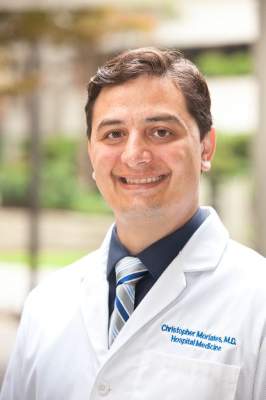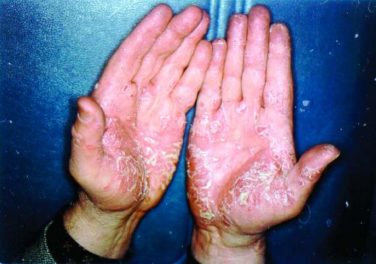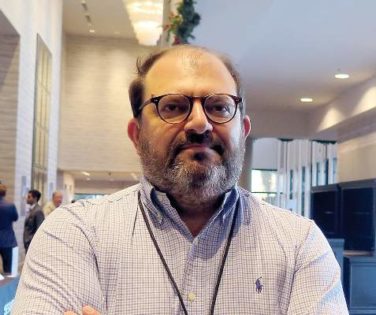Can a new medical school, with an unprecedented curriculum focused intensely on costs and value, employing teams that include nurses, pharmacists, and social workers, improve the health of Austin, Tex., and set a new standard for medical education?
That’s what leaders of Dell Medical School at the University of Texas at Austin promise to do, as they welcome the first class of 50 medical students in June.
The new school’s leaders convinced 55% of Travis County, Tex., voters in 2012 to pay higher property taxes to help support it. They’ll pay 5 cents more per $100 of assessed valuation, generating $54 million a year, about $35 million of which will go for the school, and for caring for underserved patients.
That’s unprecedented, said school officials. Dell Med is the only medical school in the country to receive a significant share of its funds from local property taxpayers approved by vote.
“Austin is unique. Austin is weird,” said Dr. Susan Cox, Dell Medical School’s executive vice dean of academics and chair of medical education, when asked how the University of Texas partnered with community leaders to persuade voters. “But the fact is, the community supports being healthy, and the idea to create a model healthy community with the medical school at the helm is what got people to vote yes.”
The medical school’s leaders overcame vocal opponents who said the University of Texas alone should foot the bill, not owners of city property. They also inferred spinoff economic benefits to the city from grants and investments for biotech and research.
Dr. Cox said taxpayers were receptive to the idea that “in communities with medical schools, students challenge physicians to stay up to date,” so care improvement follows.
“The medical student asks you a question that you (as teaching faculty) stumble on. ‘Why do you do it that way, Dr. Cox? What’s the evidence?’” she said. “We become better physicians because of that challenge.” Medical schools also embrace newer technology, Dr. Cox said.
The school’s advocates tout more relevant student clerkships, to meet the needs of today’s aging population, and the use of more collaborative learning methods compared with other medical schools. Dr. Cox acknowledged that Dell Med isn’t the only medical school trying to model its curriculum to fit value-based, population health–focused models of care. But it’s tougher for competing institutions to change, she said.
“Longstanding schools must eliminate something to add something new,” she noted. “And they have traditions where they’re in departments and silos, where they say, ‘We’ve always done it this way; our students do well and match in competitive residencies. We’re not going to give up any of what we’re doing.’ ”
Dell Med’s students will get a new hospital building right next door, to put their training into practice. The existing Brackenridge University Medical Center will move to a new structure scheduled to open in 2017 under a new name, the Dell Seton Medical Center at the University of Texas. The Michael and Susan Dell Foundation has pledged $50 million in support over the next 10 years.
Some big name faculty, such as former Centers for Medicare & Medicaid Services administrator and former Food and Drug Administration commissioner Mark McClellan, will join Dell Med part time. A UT-Austin alum, McClellan, who now directs Duke’s Robert J Margolis Center for Health Policy, has been a leading health reform policy analyst, influencing key federal bundled payment models now being implemented.
Another leader joining the Dell Med faculty is Dr. Christopher Moriates, coauthor of “Understanding Value-Based Healthcare,” and a series editor for JAMA Internal Medicine’s “Teachable Moments” series. In June, he will leave the University of California San Francisco, where he heads the Center for Healthcare Value’s “Caring Wisely” program, to be the assistant dean of health care value at Dell Med, “the first such title in the country,” he said.
“The goal of Dell Medical School is not to just create a new medical school, but a new type of medical school,” Dr. Moriates said. One example is a planned interdisciplinary program in orthopedics, led by Dr. Kevin Bozic, chair of surgery for Dell Medical School, that will not just teach doctors how to perform surgery for knee pain, but will explore “how do we give the best care for patients even before they get to the point of surgery? How do we keep people away from surgery?” he said.
“The idea is to look at everyone in the community who has knee pain, and focus on care that improves their health,” Dr. Moriates said, rather than just focusing on improving the efficiency of postsurgery care.
While medical students typically must wait until their third year to get hands-on clinical experience, Dell Med students will get that experience in their first year, Dr. Moriates said. During the second year, students will be in core clinical rotations, which usually doesn’t occur until the third year. Then, in the third year, medical students will focus on “innovation, leadership, and discovery,” which means inventing new ways to solve health challenges through technology and delivery system redesign.
The Dell Foundation and taxpayer support aren’t the only funding sources . The University of Texas System Board of Regents has allocated $25 million annually and another $40 million over 8 years to recruit faculty.
The investment is already generating returns. The new medical school appears to be in demand, as Dell Med received over 4,500 applications for those 50 first-year spots, Dr. Moriates said.
Dell Medical School was one of four medical schools in the United States to receive accreditation in 2015, bringing the national number of medical schools to 145, according to the accrediting body, the Liaison Committee on Medical Education . Another seven schools are listed as having applied or are candidates for accreditation.




